Nissan Qashqai VS Nissan Juke – Specs, Efficiency & Price Comparison
Which model is the better choice – the Nissan Qashqai or the Nissan Juke? We compare performance (190 HP vs 143 HP), boot capacity (504 L vs 422 L), efficiency (5.10 L vs 4.70 L), and of course, the price (29400 £ vs 21400 £).
Find out now which car fits your needs better!
The Nissan Qashqai (SUV) is powered by a Petrol MHEV or Full Hybrid engine and comes with a Manuel or Automatic transmission. In comparison, the Nissan Juke (SUV) features a Petrol or Full Hybrid engine and a Manuel or Automatic gearbox.
When it comes to boot capacity, the Nissan Qashqai offers 504 L, while the Nissan Juke provides 422 L – depending on what matters most to you. If you’re looking for more power, you’ll need to decide whether the 190 HP of the Nissan Qashqai or the 143 HP of the Nissan Juke suits your needs better.
There are also differences in efficiency: 5.10 L vs 4.70 L. In terms of price, the Nissan Qashqai starts at 29400 £, while the Nissan Juke is available from 21400 £.
Compare all the key specs now and find out which model fits your lifestyle best!
The Nissan Juke and Nissan Qashqai represent two distinct approaches to the crossover market, appealing to different drivers with their unique designs and features. While the Juke boasts a bold, sporty aesthetic and agile handling, the Qashqai prioritizes practicality and comfort, making it a versatile choice for families. Ultimately, the decision between these two popular models hinges on personal preference for style versus utility.
Nissan Qashqai
The Nissan Qashqai stands out in the compact SUV market with its sleek design and versatile features. Its smooth ride and refined interior make it a popular choice for both city driving and weekend adventures. Advanced safety technologies and user-friendly infotainment add to its appeal, ensuring a comfortable and secure driving experience for all passengers.
details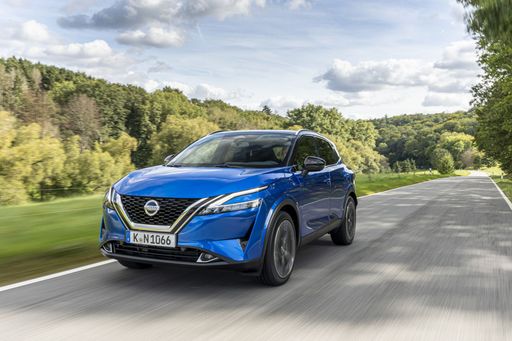 @ Nissan
@ Nissan
 @ Nissan
@ Nissan
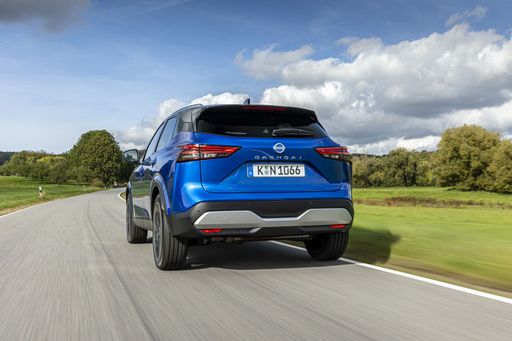 @ Nissan
@ Nissan
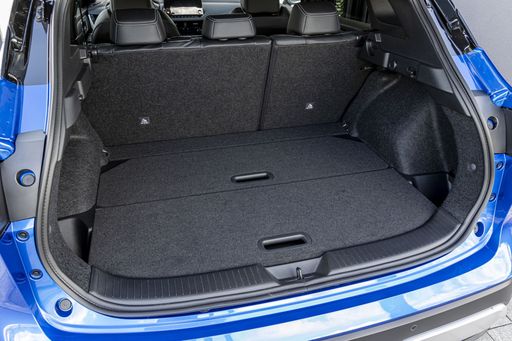 @ Nissan
@ Nissan
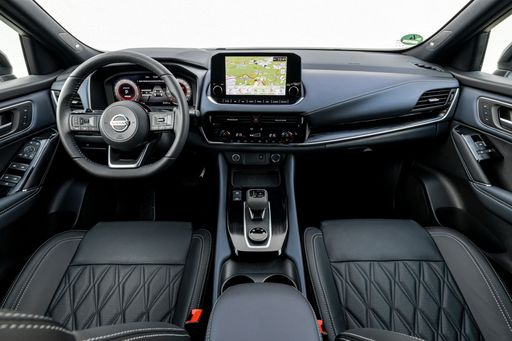 @ Nissan
@ Nissan
Nissan Juke
The Nissan Juke stands out with its distinctive design and bold styling, making it a popular choice for those seeking something different on the road. Its interior cleverly combines modern technology with comfort, offering an enjoyable driving experience for both the driver and passengers. Despite its compact size, the Juke provides a surprising amount of space and versatility, making it suitable for urban adventures and weekend getaways alike.
details @ germany.nissannews.com
@ germany.nissannews.com
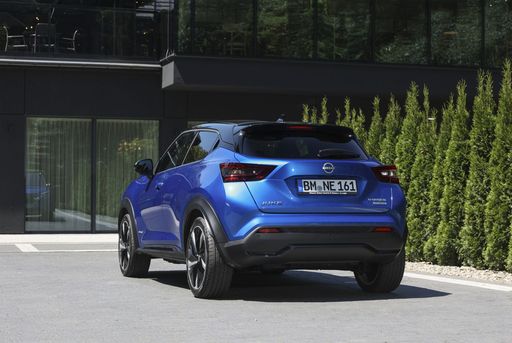 @ germany.nissannews.com
@ germany.nissannews.com
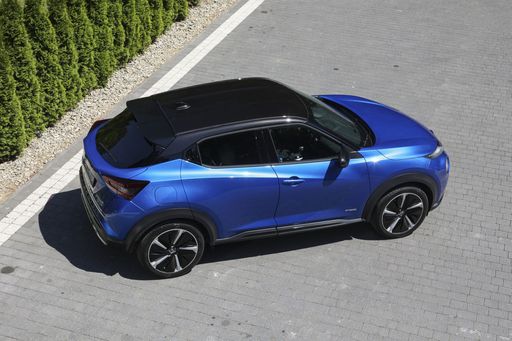 @ germany.nissannews.com
@ germany.nissannews.com
 @ germany.nissannews.com
@ germany.nissannews.com
Introduction: Competing Titans in the Compact SUV Category
The automotive world is buzzing with excitement as two of Nissan's leading models vie for supremacy in the compact SUV segment: the Nissan Juke and the Nissan Qashqai. Both of these vehicles offer unique features, cutting-edge technology, and a blend of sportiness and practicality. But how do they compare? In this article, we delve into the technical aspects and innovations that set these two popular SUVs apart from each other and help potential buyers make an informed choice.
Engine Performance and Efficiency
The Nissan Juke packs a punch with a choice of petrol and full hybrid engines, delivering between 114 to 143 horsepower. The acceleration production for the Juke is decent, offering 0-100 km/h times ranging from 10.1 to 11.8 seconds, ensuring a spirited driving experience. Its fuel consumption ranges from an economical 4.7 L/100 km to 6.0 L/100 km, making it a favorable option for those looking to balance power with fuel efficiency.
On the other hand, the Nissan Qashqai boasts a broader range of engine options, including petrol mild hybrid and full hybrid variants. The power output spans from 140 hp to an impressive 190 hp, with acceleration times from 7.9 seconds to 10.2 seconds for 0-100 km/h sprint. The Qashqai's fuel consumption is slightly higher, averaging between 5.1 to 6.8 L/100 km, which is still competitive for the segment.
Drivetrain Variants
The Juke is exclusively available as a front-wheel drive vehicle, offering stability and efficiency. Transmission options include both manual and automatic versions, including a dual-clutch automatic, catering to a variety of driver preferences.
Conversely, the Qashqai offers more versatility with choices for both front-wheel drive and all-wheel drive configurations, expanding its appeal for drivers who seek off-road capabilities. The transmission options include manual, variable transmission (CVT), and a reduction gearbox, making it suitable for a range of driving styles.
Dimensions and Interior Space
Dimensions-wise, the Juke measures 4210 mm in length, 1800 mm in width, and 1593 mm in height, while the Qashqai is more substantial at 4425 mm in length, 1835 mm in width, and 1625 mm in height. This size difference is reflected in their trunk capacities: the Juke offers 422 liters, while the Qashqai allows for a more generous 504 liters of cargo space, making it the more practical option for families or those needing extra storage.
Technology and Innovations
Both Nissan vehicles come equipped with a suite of advanced technology features. The Juke showcases Nissan's innovative infotainment system with a vibrant touchscreen, smartphone integration, and a comprehensive driver assistance suite. Additionally, the Juke includes features such as lane departure warning and automatic emergency braking, enhancing safety for all occupants.
Meanwhile, the Qashqai takes technology a step further with features like ProPILOT Assist, an advanced driver assistance system that provides semi-autonomous driving capabilities. The Qashqai's interior also benefits from a more premium feel, with higher quality materials and a more extensive range of connectivity options and infotainment systems.
Conclusion: Which SUV Reigns Supreme?
When it comes to selecting between the Nissan Juke and the Nissan Qashqai, it ultimately boils down to individual preferences. The Juke stands out for its sporty aesthetics, nimble handling, and impressive fuel efficiency, making it an ideal choice for city dwellers and young professionals.
On the other hand, the Qashqai shines with its spacious cabin, greater cargo capacity, versatile drivetrain options, and advanced technology integrations, appealing to families and adventure enthusiasts alike.
Regardless of choice, both the Nissan Juke and Qashqai offer compelling features and performance, solidifying their places in the competitive SUV market.

|

|
|
|
|
Costs and Consumption |
|
|---|---|
|
Price
29400 - 42500 £
|
Price
21400 - 30100 £
|
|
Consumption L/100km
5.1 - 6.8 L
|
Consumption L/100km
4.7 - 6 L
|
|
Consumption kWh/100km
-
|
Consumption kWh/100km
-
|
|
Electric Range
-
|
Electric Range
-
|
|
Battery Capacity
-
|
Battery Capacity
0.60 kWh
|
|
co2
116 - 154 g/km
|
co2
107 - 136 g/km
|
|
Fuel tank capacity
55 L
|
Fuel tank capacity
46 L
|
Dimensions and Body |
|
|---|---|
|
Body Type
SUV
|
Body Type
SUV
|
|
Seats
5
|
Seats
5
|
|
Doors
5
|
Doors
5
|
|
Curb weight
1420 - 1665 kg
|
Curb weight
1274 - 1405 kg
|
|
Trunk capacity
479 - 504 L
|
Trunk capacity
354 - 422 L
|
|
Length
4425 mm
|
Length
4210 mm
|
|
Width
1835 mm
|
Width
1800 mm
|
|
Height
1625 mm
|
Height
1593 mm
|
|
Payload
466 - 520 kg
|
Payload
405 - 427 kg
|
Engine and Performance |
|
|---|---|
|
Engine Type
Petrol MHEV, Full Hybrid
|
Engine Type
Petrol, Full Hybrid
|
|
Transmission
Manuel, Automatic
|
Transmission
Manuel, Automatic
|
|
Transmission Detail
Schaltgetriebe
|
Transmission Detail
Schaltgetriebe, Automat. Schaltgetriebe (Doppelkupplung), Automatikgetriebe
|
|
Drive Type
Front-Wheel Drive, All-Wheel Drive
|
Drive Type
Front-Wheel Drive
|
|
Power HP
140 - 190 HP
|
Power HP
114 - 143 HP
|
|
Acceleration 0-100km/h
7.9 - 10.2 s
|
Acceleration 0-100km/h
10.1 - 11.8 s
|
|
Max Speed
170 - 206 km/h
|
Max Speed
166 - 180 km/h
|
|
Torque
240 - 330 Nm
|
Torque
200 Nm
|
|
Number of Cylinders
3 - 4
|
Number of Cylinders
3 - 4
|
|
Power kW
103 - 140 kW
|
Power kW
84 - 105 kW
|
|
Engine capacity
1332 - 1497 cm3
|
Engine capacity
999 - 1598 cm3
|
General |
|
|---|---|
|
Model Year
2024
|
Model Year
2024
|
|
CO2 Efficiency Class
E, D
|
CO2 Efficiency Class
D, E, C
|
|
Brand
Nissan
|
Brand
Nissan
|
Nissan Qashqai
Exploring the New Nissan Qashqai: A Masterclass in Innovation and Performance
The Nissan Qashqai stands as a testament to the brand's continuous evolution in the competitive SUV market. Building on its robust reputation, the latest models bring a blend of style, efficiency, and groundbreaking technology that cater to the modern driver's needs. As we delve into the technical nuances and innovative features, it becomes evident why the Qashqai remains a top contender in its segment.
Powertrain and Efficiency: A Harmonious Balance
The latest Nissan Qashqai models feature an advanced range of powertrain options, including both mild-hybrid and full-hybrid systems. The 1.3 DIG-T MHEV engines provide power outputs ranging from 140 to 158 PS, ensuring a responsive driving experience while maintaining a remarkable fuel efficiency of 6.3 L/100km for automatic front-wheel drive versions. The full-hybrid 1.5 VC-T e-POWER delivers an impressive 190 PS while achieving a fuel efficiency of just 5.1 L/100km, demonstrating Nissan's commitment to ecological innovation.
Advanced Transmission Systems
Drivers can choose between manual or automatic transmissions, tailored to their driving style. The manual gearbox offers a tactile driving experience, while the automatic options, including a CVT and reduction gear transmission, ensure seamless power delivery and heightened efficiency. For those who seek greater traction and stability, all-wheel drive configurations are also available, enhancing the Qashqai's versatility.
High-Tech Interior: Comfort Meets Connectivity
The Qashqai's interior is a sanctuary of technology and comfort. The SUV features a user-friendly infotainment system with a touchscreen interface, compatible with both Android Auto and Apple CarPlay. The seamless integration of technology extends to advanced driver-assistance systems (ADAS) that include ProPILOT with Navi-link, enhancing convenience and safety during long drives or urban manoeuvres.
Performance and Dynamics: The Driving Experience
When it comes to performance, the Qashqai does not compromise. With acceleration from 0-100 km/h in as little as 7.9 seconds in the more powerful hybrid editions, and a top speed ranging from 170 to 206 km/h, Nissan ensures that excitement is part and parcel of the Qashqai driving experience. This balance of power and control is complemented by a well-tuned suspension system and precise steering response, providing a confident drive whether on highways or country lanes.
Design and Practicality: Where Form Meets Function
Sporting an aerodynamic silhouette, the Qashqai exudes a modern vibe that is both eye-catching and functional. Its dimensions, with a length of 4425 mm and a width of 1835 mm, provide ample cabin space for five passengers, along with a versatile boot capacity of up to 504 litres. These aspects make it an ideal choice for families and adventurers alike.
Conclusion: A Forward-Thinking Choice
The Nissan Qashqai remains a steadfast choice for those seeking an SUV that blends innovative technology with everyday practicality. With its advanced hybrid options and cutting-edge features, it not only meets but often exceeds the demands of today's environmentally conscious and tech-savvy drivers. As Nissan continues to push boundaries, the Qashqai stands as a beacon of what modern SUVs can achieve.
Nissan Juke
Introduction to the Nissan Juke: A Compact SUV with Style
The Nissan Juke has always been a standout in the compact SUV segment, renowned for its bold design and impressive versatility. As we look at the 2024 model year, Nissan continues to innovate, offering a range of options that cater to both practicality and driving pleasure.
Performance and Efficiency: Under the Bonnet of the Nissan Juke
The 2024 Nissan Juke comes with a variety of engine choices tailored to suit different driving needs. With power outputs ranging from 114 to 143 PS, these engines strike a balance between performance and efficiency. The petrol options are equipped with a 1.0-litre three-cylinder engine that generates 114 PS, providing a sprightly drive perfect for urban environments. Meanwhile, the 1.6-litre hybrid version offers 143 PS, combining electric and petrol power for a more eco-friendly performance.
Fuel consumption varies between 4.7 and 6 L/100km, highlighting the Juke's commitment to efficiency. With CO2 emissions ranging from 107 to 137 g/km, the Nissan Juke offers an environmentally conscious choice for drivers seeking to reduce their carbon footprint.
Driving Technology and Innovation
Innovation is at the heart of the Nissan Juke, with cutting-edge technology designed to enhance the driving experience. The hybrid variants use a unique full-hybrid system, incorporating a small 0.6 kWh battery to provide seamless power assistance during acceleration. This system not only improves efficiency but also supports a smooth, responsive driving experience.
The Juke's manual gearboxes and various automatic transmission options, including the efficient dual-clutch transmission, ensure that drivers can choose the driving style that best suits their preferences. Front-wheel drive remains standard across the range, delivering dependable and predictable handling characteristics.
Design and Comfort: More Than Just Looks
The Juke's exterior is daringly distinctive, with a design that combines angular lines and a high-riding stance to create a sporty yet practical profile. The dimensions of 4,210 mm in length, 1,800 mm in width, and 1,593 mm in height, combined with its 5-door configuration, ensure ample space and accessibility for passengers and luggage alike.
Inside, the Nissan Juke accommodates up to five passengers with comfort and style. A boot capacity ranging from 354 to 422 litres provides adequate space for everyday life or weekend getaways. The various trim levels, including Acenta and Tekna, are equipped with premium features and technology to keep occupants entertained and comfortable.
Safety Features and Driver Assistance
Nissan has equipped the Juke with an array of safety features that provide peace of mind on the road. The Juke includes standard and optional technologies such as adaptive cruise control, lane-keeping assist, and emergency braking systems, enhancing both driver confidence and passenger safety.
With CO2 efficiency classes ranging from C to E, the Nissan Juke not only delivers advanced safety but also meets modern environmental standards.
Conclusion: A Balanced Compact SUV
The 2024 Nissan Juke stands out as a compelling choice in the compact SUV market. With its combination of eye-catching design, innovative technology, and efficient performance, the Juke continues to attract drivers looking for a unique vehicle that doesn’t compromise on practicality or driving pleasure. Whether in the city or on the open road, the Juke delivers a driving experience that is both thrilling and responsible.
The prices and data displayed are estimates based on German list prices and may vary by country. This information is not legally binding.
